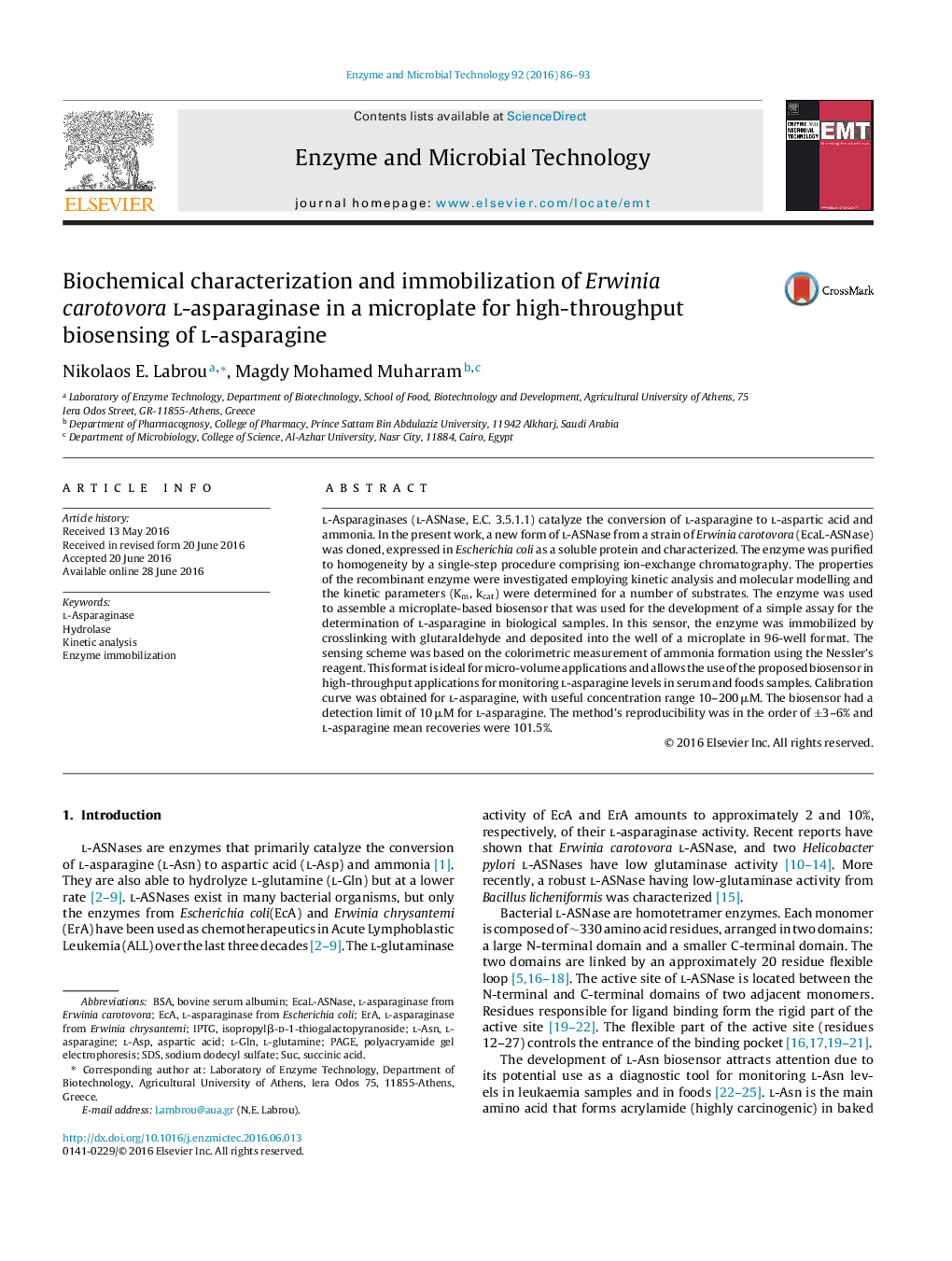| Article ID | Journal | Published Year | Pages | File Type |
|---|---|---|---|---|
| 16763 | Enzyme and Microbial Technology | 2016 | 8 Pages |
•l-ASNase from E. carotovora was cloned, expressed and characterized.•The enzyme was used to assemble a microplate-based biosensor.•The biosensor was explored for the determination of l-Asn in biological samples.•The biosensor displayed high specificity and good stability.
l-Asparaginases (l-ASNase, E.C. 3.5.1.1) catalyze the conversion of l-asparagine to l-aspartic acid and ammonia. In the present work, a new form of l-ASNase from a strain of Erwinia carotovora (EcaL-ASNase) was cloned, expressed in Escherichia coli as a soluble protein and characterized. The enzyme was purified to homogeneity by a single-step procedure comprising ion-exchange chromatography. The properties of the recombinant enzyme were investigated employing kinetic analysis and molecular modelling and the kinetic parameters (Km, kcat) were determined for a number of substrates. The enzyme was used to assemble a microplate-based biosensor that was used for the development of a simple assay for the determination of l-asparagine in biological samples. In this sensor, the enzyme was immobilized by crosslinking with glutaraldehyde and deposited into the well of a microplate in 96-well format. The sensing scheme was based on the colorimetric measurement of ammonia formation using the Nessler’s reagent. This format is ideal for micro-volume applications and allows the use of the proposed biosensor in high-throughput applications for monitoring l-asparagine levels in serum and foods samples. Calibration curve was obtained for l-asparagine, with useful concentration range 10–200 μΜ. The biosensor had a detection limit of 10 μM for l-asparagine. The method’s reproducibility was in the order of ±3–6% and l-asparagine mean recoveries were 101.5%.
